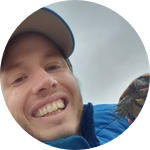Please wait...
About This Project
Welcome to the coolest ecosystem you've never heard of - the anchialine ecosystem! Anchialine habitats are coastal ponds, pools, and caves with underground connections to sea- and fresh waters. They are rare and have tons of endemic organisms, many of which are threatened. We're using environmental DNA (eDNA - DNA found in the water itself) to monitor anchialine shrimps in Hawaii. We will use common species kept in the lab to develop an eDNA toolkit for monitoring rare, endangered species.


